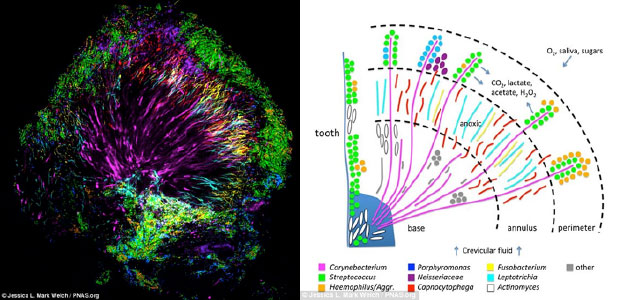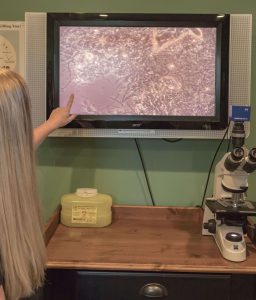Sydenham Family Dental | Biological & Comprehensive Dentistry
YOUR BEST DENTAL EXPERIENCE
Diagnostic Services
Intake Exam
New patients to our practice need to complete the New Patient Exam Form and Sleep Partner Survey found under patient forms. This is a comprehensive questionnaire, which gives Dr. Clinton important information and must be completed and submitted at least 48 hours prior to the appointment so he can review your medical and dental history and concerns. Radiographic information as well as a plaque sample for microscopic analysis will be collected.
Biological Periodontal Therapy
As a part of our biological approach to dental treatment, we analyze the plaque that forms around teeth using a phase contrast microscope according to the principles developed by Dr. Trevor Lyons. The video below provides a good solid understanding of the principals involved.
A dental plaque analysis is a window into your oral health and subsequently into your overall health. A new study by Jessica Mark Welch from the Marine Biological Laboratory in Woods Hole and Gary Borisy from the Forsyth Institute examined the tiny world of bacteria living in our mouths and colour coated them to form kaleidoscopic works of art. And by the end of the experiment, researchers had markers covering 96 percent of the microbes in human plaque.

According to the study published in journal PNAS, using sequencing data combined with spectral fluorescence imaging, a multigenus, highly organized microbial consortium was discovered in human dental plaque. Clearly dental plaque is a highly organized structure and we are just beginning to understand the organization, metabolism, and systems biology of the oral microbiome and ultimately, its effect on the health of the human host.
As part of the new patient exam a small sample of your saliva and dental plaque is placed under a microscope. Together we can see the different pathogens thriving in your mouth. The best way to treat disease is to understand the source.

- If there are unhealthy microbes, why are they present?
- Are they there due to local hygiene issues or a systemic compromise?
- Is my lifestyle leaving me susceptible to inflammatory disease?
- Are my medications or existing materials exasperating my oral condition?
- How can I optimize my health and reduce risk factors for other chronic conditions?
- Do I require gum surgery?
- How can I prevent this?
Biological Periodontal Therapy requires three basic steps for long term success:
This is considered the acute phase of therapy and may require a number of follow-up visits.
This step starts with irrigating the entire mouth with an ozone water rinse followed by irrigating the tissues around each tooth with ozonated air. Traditional teeth cleaning can introduce pathogenic bacteria into the blood circulating them throughout the body. Irrigation with ozone helps reduce the initial exposure of microbes into the blood stream before periodontal therapy begins.
Next, the periodontal pockets are treated as needed with traditional scaling and sub-gingival irrigation in order to eliminate the offending microorganisms and calculus that are present.
Using the phase contrast microscope, we monitor your progress by the change in microbial populations from pathogenic to healthy. This is a great visual display of the bacteria level in the mouth which often motivates patients to continue the steps necessary for their improvement.
Each appointment is concluded with an ozonated water mouth rinse and polish.
We use “natural” oral home care products and methods to compliment your particular needs, which are discussed at the initial analysis of your plaque.
Second, alter host response:
Ideally, one of our allied health practitioners, such as a naturopathic physician, should work with you to balance your body chemistry. An acidic body chemistry is a major causative factor for disease in oral cavity and throughout your body. This may take some time depending on your condition. Therefore, balancing your body chemistry may be a longer term phase of your therapy.
Balancing your body chemistry is the hardest part of the program, often requiring changes to dietary and lifestyle habits.
Third, reduce susceptibility through maintenance care:
Once your biological periodontal therapy is completed, it is essential that you continue with a maintenance program, which includes follow-up microscopic examination of your plaque, which is personally designed for you.
The systemic problems associated with periodontal infections are too dangerous to ignore. These include heart disease, stroke, pre-term, low birth weight babies, pregnancy gingivitis, stomach ulcers, diabetes, brain abscesses, prosthetic joint failure and sub-acute bacterial endocarditis among others.
Digital X-Rays
Regarding radiographs or x-rays. These are non-optional. Without radiographic information of the teeth and underlying bone support structures we cannot make a definitive diagnosis. New patients are required to have a panoramic x-ray, with the exception of young children. A panoramic x-ray, like the name implies, shows all of the teeth, supporting bone, jaws and lots of other information. This is the minimal requirement.

Specific area x- rays may also be required to pick up specific details in areas flagged during the exam or picked up on the panoramic x-ray. Our x-ray units are digital and the newest available, installed in 2015, which means that radiation exposure is minimal.
Often patients request that we obtain radiographs from previous dental offices. Sometimes they are of diagnostic value but more often than not they are either dated or of poor diagnostic quality. Also, please be aware that we cannot base our treatment decisions on 3rd party radiographs. If there was an issue that was not addressed, we need our own updated radiograph.
Laser Cavity Detection
The Canary System

